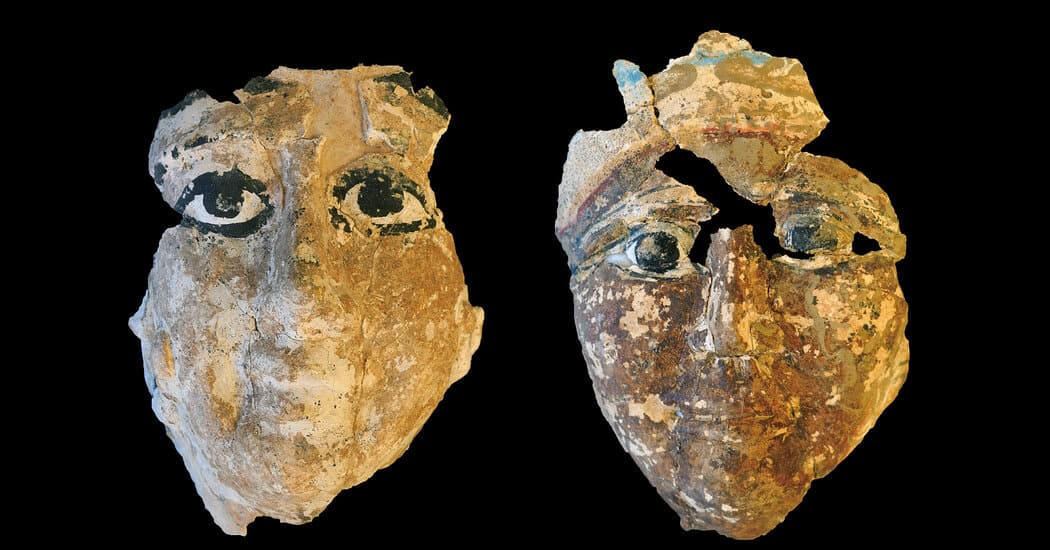
Death Masks from Ancient Egypt Find an Afterlife








When it came to the dicey journey to the afterlife, the more affluent citizens of ancient Egypt took no chances. In elaborate funeral ceremonies, protective spells were invoked, sarcophaguses were larded with amulets and the faces of the dead were covered with death masks designed to guide the spirits of mummified remains into the next world — a placid field of reeds — then back to their final resting place in the body.
Recently, an expedition of Japanese and Egyptian archaeologists unearthed three such masks in a series of cut-rock tombs in the cliffs of Saqqara, a primary burial site for the Pharaonic capital of Memphis. In texts of the New Kingdom, a period spanning 1550 B.C. to 1070 B.C., a mask placed over the head of a mummy was called a sukhet, meaning “egg,” and sometimes tep en seshta, meaning “head of secrets” or “head of mysteries.”
Foy Scalf, an Egyptologist at the University of Chicago, said that the “secret” or “mystery” was a euphemism for the mummy itself, which, after the embalming and appropriate rites, took on a special nature. In cases of physical damage, a face covering helped preserve the head and provided a permanent idealized likeness of the deceased.
The masks, manufactured by artisans in workshops, would not have come cheap; the pigments and labor were costly. But Dr. Scalf said the sheer number of masks that have survived suggests that they were not restricted to the elites. “I don’t think it would be surprising if up to 35 percent of the population had the means to acquire them,” he said.
One of the newly unearthed Saqqara masks was discovered outside a Greco-Roman catacomb discovered in 2019. Made of clay, it was wedged above a human skull and surrounded by fragments of a striated wig.
“The color scheme of the wig indicates the dating from the Late Period and the Ptolemaic Period, roughly 713 B.C. to 30 B.C.,” said Nozomu Kawai, an archaeologist at Kanazawa University in Japan and the expedition leader.
The other two masks were found inside the catacomb along with terra-cotta figurines of Isis-Aphrodite — the goddess of childbirth and rebirth — and her son Harpocrates, the Greek take on Horus, the Egyptian god of silence who could protect himself from sickness and death. “With infant mortality so high, one can imagine that Harpocrates was especially revered,” said Kara Cooney, a professor of Egyptian art and architecture at the University of California, Los Angeles.
The two masks have been traced to the second century A.D., a time when Egypt was an imperial province of the Roman Empire. Both were molded from cartonnage, created by soaking strips of linen or old papyrus scrolls in a paste and laying them over a woodblock form or the actual head of a mummy. The masks were then covered with a thin layer of gesso and painted gold, believed to be the color of the gods’ flesh and considered an eternal and indestructible hue.
Produced by Antonio de Luca and Matt McCann
Photographs by EPA, via Shutterstock
